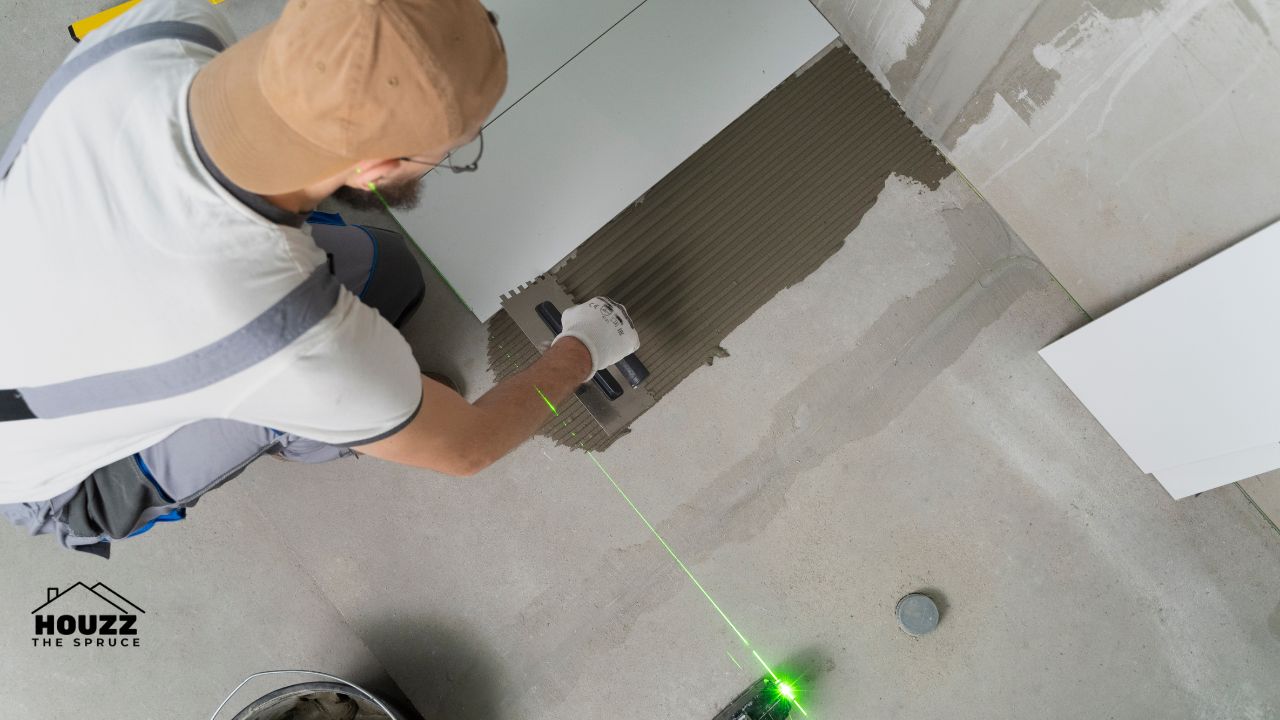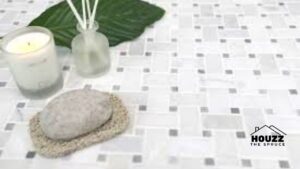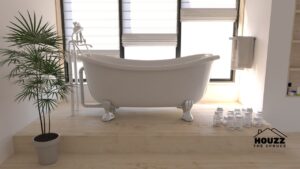When it comes to picking the right grout for your tiles, things can get a bit confusing — especially when you hear terms like sanded vs unsanded grout, sanded grout vs unsanded grout, or even unsanded vs sanded grout. But don’t worry — once you understand the types, styles, and materials, it all starts to make sense. Let’s explore how each type of grout behaves, where it shines, and what makes it different.
1. Understanding the Two Main Types
At the most basic level, there are only two types of tile grout — sanded grout and unsanded grout. Everything else you see in stores or online is usually just a variation of these two.
Sanded Grout
Sanded grout contains tiny grains of sand, which makes it feel slightly gritty. This sand adds strength and prevents shrinking as the grout dries. It’s perfect for wider joints, typically 1/8 inch or larger. Think of sanded grout vs unsanded grout for floor — floors often need this kind because the sand helps lock the tiles in place and adds durability.
When comparing grout sanded vs unsanded, this version is tougher and better suited for high-traffic areas, like kitchens, hallways, and bathrooms. If you imagine your tiles as puzzle pieces, sanded grout is the strong glue that keeps everything tight and stable.
Unsanded Grout
Unsanded grout (or non-sanded grout) is smooth and creamy because it doesn’t contain sand. It’s ideal for narrow joints, usually less than 1/8 inch. This type is perfect for delicate tiles like marble or glass, where sanded grout could scratch the surface.
If you’re wondering when to use sanded vs unsanded grout, here’s an easy rule of thumb:
- Use unsanded grout for thin joints and delicate tiles.
- Use sanded grout for wide joints and heavy-duty surfaces.
2. Style Variations: The Look and Feel
Beyond the texture, both grouts come in various styles and finishes that can dramatically change how your tiles look.
Matte Finish Grout
A popular choice for homeowners who want a natural and rustic look. Matte grout hides dust and smudges well, making it a smart option for floors and walls.
Glossy Finish Grout
If you want your tiles to pop with brightness and reflection, go for glossy grout. It’s easy to wipe clean but may highlight imperfections more easily.
Color-Tinted Grout
Grout doesn’t have to be white! You can now find tinted options that match or contrast your tiles. For instance, a charcoal sanded grout vs unsanded grout can add dramatic contrast to white tiles, while a beige or cream tone gives a soft, seamless finish.
Textured Grout
Some grouts include small aggregates or additives that give them a special look. Textured finishes add character, especially when paired with rustic or handmade tiles.
3. Material Variations in Sanded and Unsanded Grout
Not all grouts are made the same. In fact, both sanded grout vs unsanded grout come in a variety of material bases, each offering unique advantages.
a. Cement-Based Grout
This is the classic choice and comes in both sanded and unsanded forms. Cement grout is easy to apply and affordable, but it does need to be sealed regularly to prevent stains.
- Sanded cement grout: Great for floors and large joints.
- Unsanded cement grout: Perfect for walls, backsplashes, and small tiles.
You’ll often see comparisons like sanded vs unsanded grout backsplash or sanded vs unsanded grout for shower — cement-based versions are typically what people use for both.
b. Epoxy Grout
Epoxy grout is a modern upgrade. It’s stronger, waterproof, and doesn’t need sealing. It resists stains, chemicals, and cracking — perfect for showers, kitchens, and commercial spaces.
- Sanded epoxy grout: Works best for durable, moisture-heavy areas, like floors or countertops.
- Unsanded epoxy grout: Better for glass or marble tiles that need gentle handling.
When you compare sanded vs unsanded grout in shower, epoxy versions stand out because they hold up well against moisture and cleaning chemicals.
c. Pre-Mixed Grout
Pre-mixed grout is all about convenience — no need to blend powder and water. It’s ready to use straight from the bucket. You’ll find pre-mixed versions of both sanded grout vs unsanded grout showers, especially handy for small DIY projects.
d. MAPEI Grout
One of the top brands in the tile world is MAPEI. They offer both MAPEI sanded vs unsanded grout options in a wide range of colors and finishes. MAPEI’s unsanded version is known for its smooth application, while their sanded formula is praised for strength and durability.
4. Choosing the Right Type for Your Project
To make the right choice, think about where and how you’ll use the grout. Here’s a quick breakdown:
| Area | Best Type | Why |
|---|---|---|
| Flooring | Sanded grout | Strong, resists cracking, handles traffic |
| Walls & Showers | Unsanded grout | Smooth, won’t scratch tiles |
| Backsplashes | Either, depending on tile gap | Sanded for large gaps, unsanded for tight joints |
| Marble or Glass Tile | Unsanded grout | Prevents scratches |
| Outdoor Areas | Sanded grout | More durable and weather-resistant |
This table also helps answer questions like sanded vs unsanded grout for backsplash, sanded vs unsanded grout shower, and tile grout sanded vs unsanded — all depending on your tile type and joint width.
5. Expert Tip: Blend Style with Function
When deciding between sanded grout vs unsanded, don’t just think about strength — think about style. For example:
- In a modern bathroom, a smooth unsanded grout between thin glass tiles gives a clean, minimalistic look.
- In a rustic kitchen, sanded grout between textured ceramic tiles adds charm and depth.
If you’re installing a backsplash, the choice between grout sanded vs unsanded backsplash often comes down to whether you want more texture or a smoother look.
6. Key Takeaways
Here’s a quick recap of what we’ve learned about sanded vs unsanded grout:
- Sanded grout = strong, gritty, best for large joints and floors.
- Unsanded grout = smooth, delicate, perfect for small joints and sensitive tiles.
- Choose epoxy versions for waterproof durability.
- Use cement-based grouts for cost-effective home projects.
- Always match the grout style and color to your tile’s finish and environment.
Remember, the right grout isn’t just about filling gaps — it’s about protecting your tiles, enhancing your décor, and ensuring long-lasting beauty.












